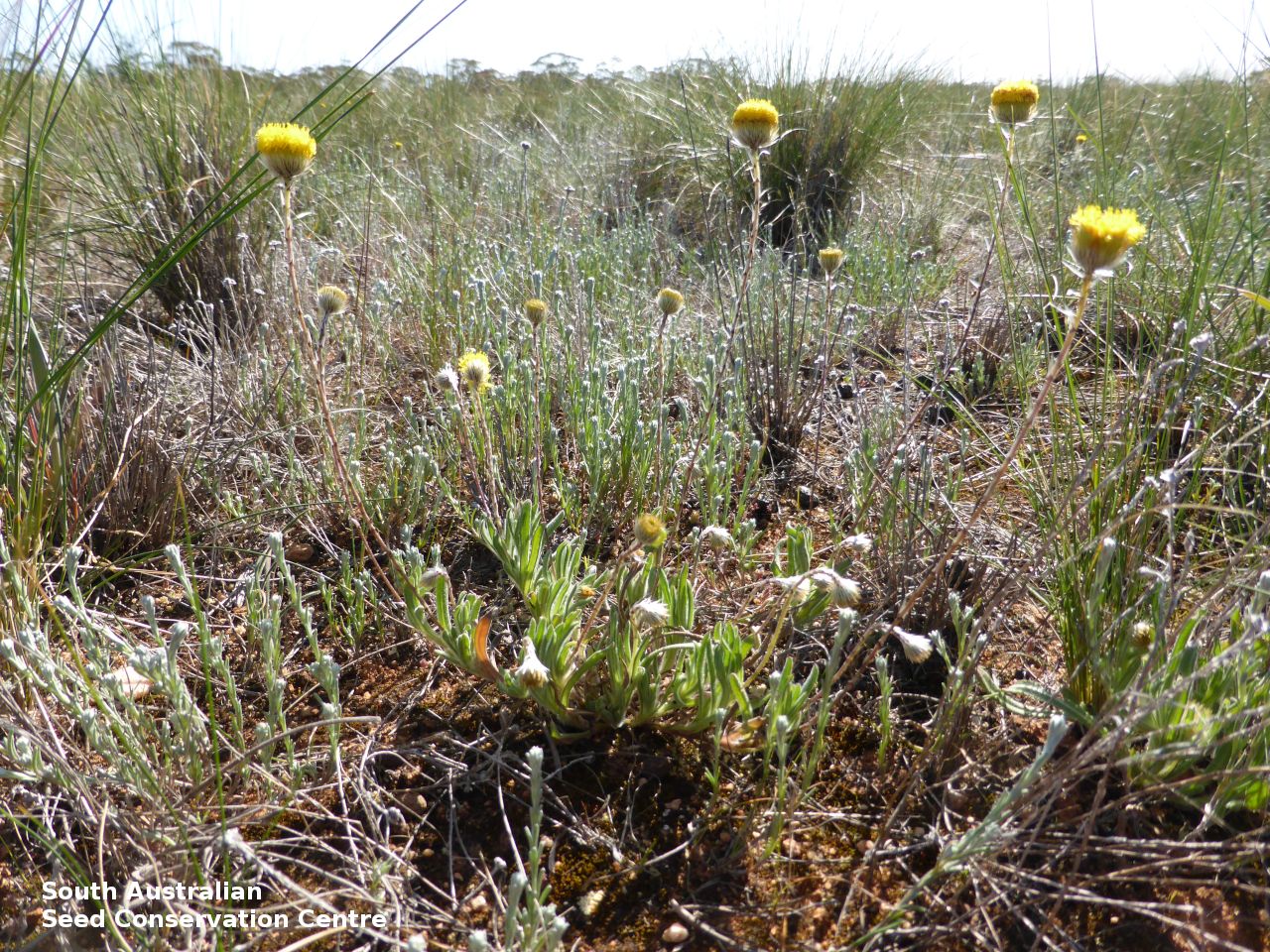
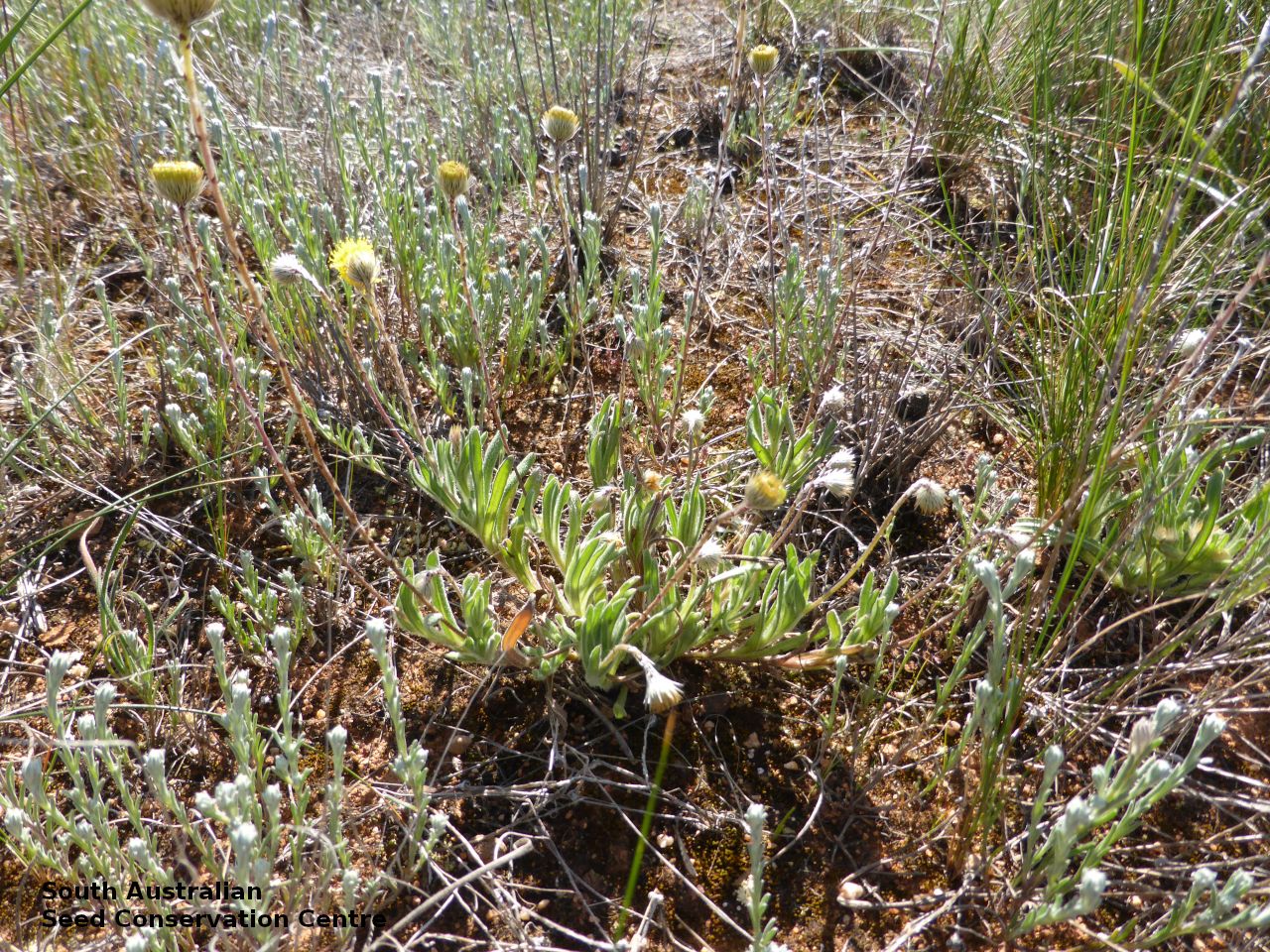
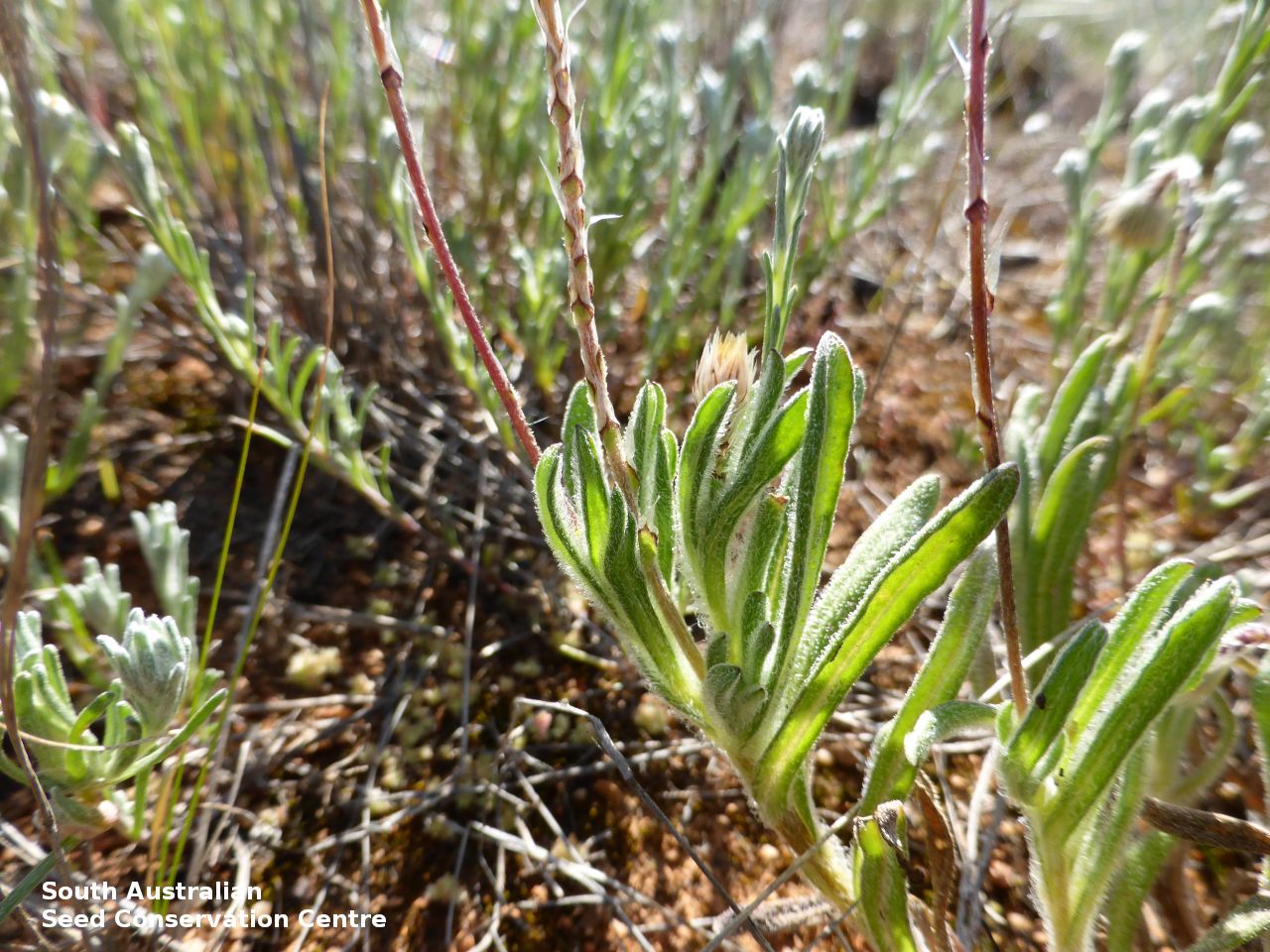
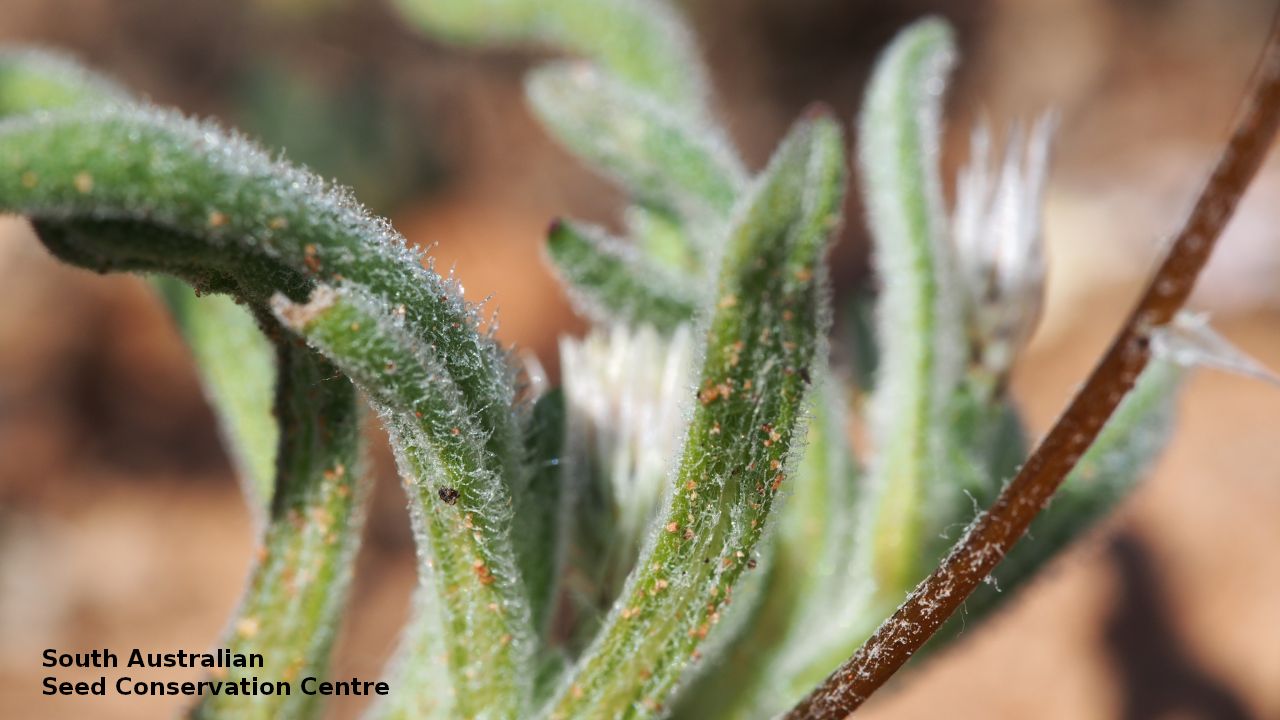
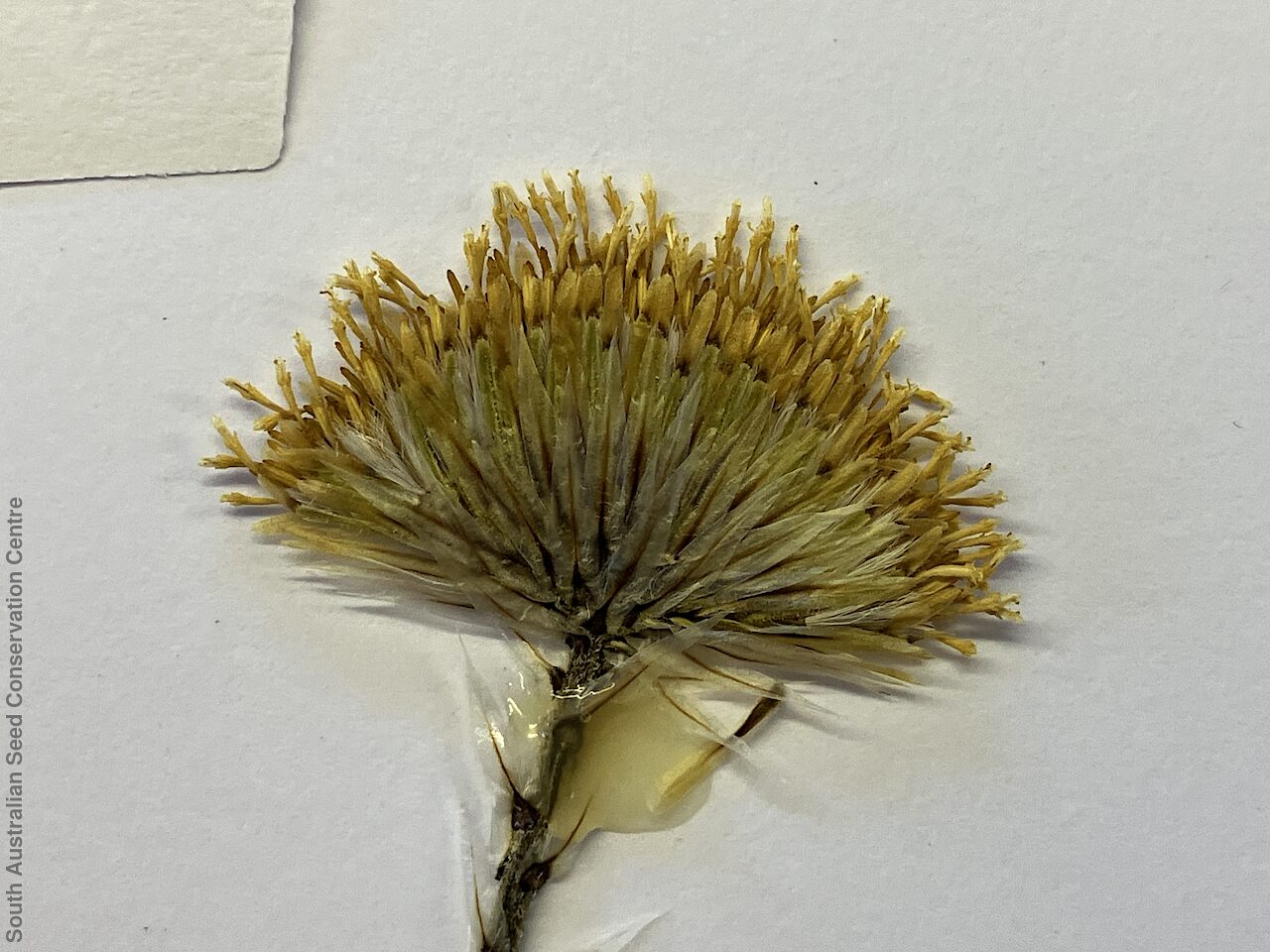
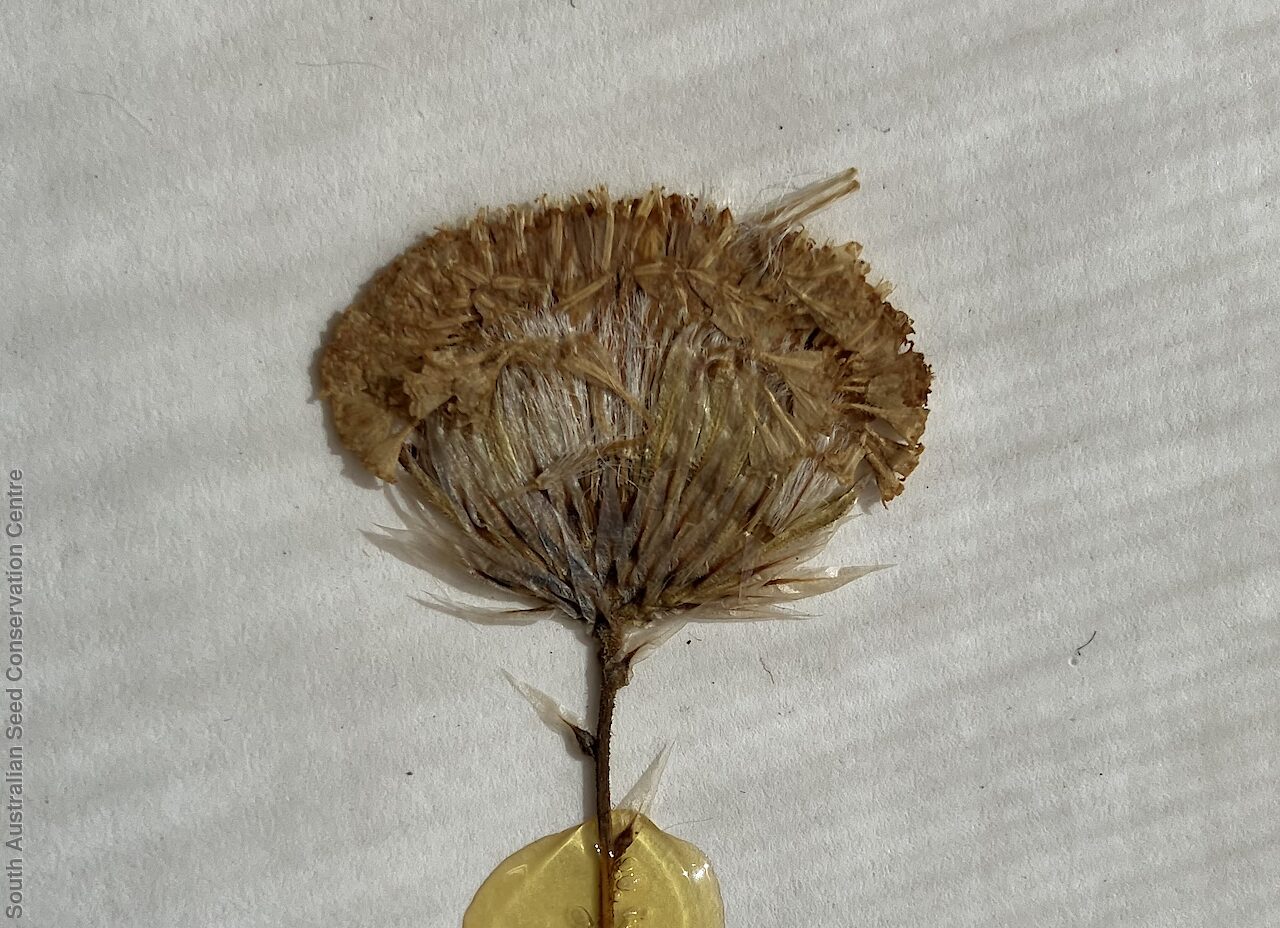
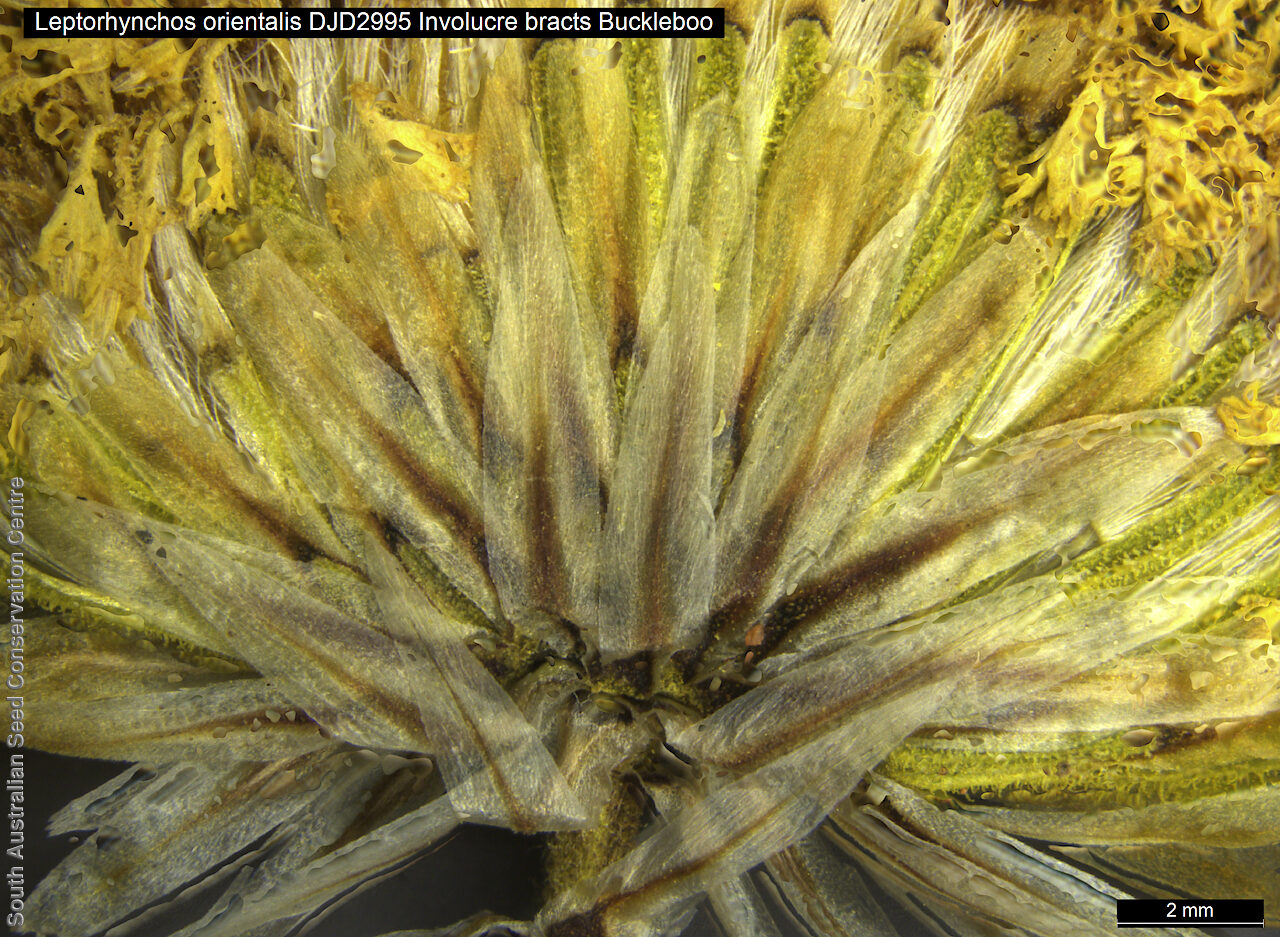
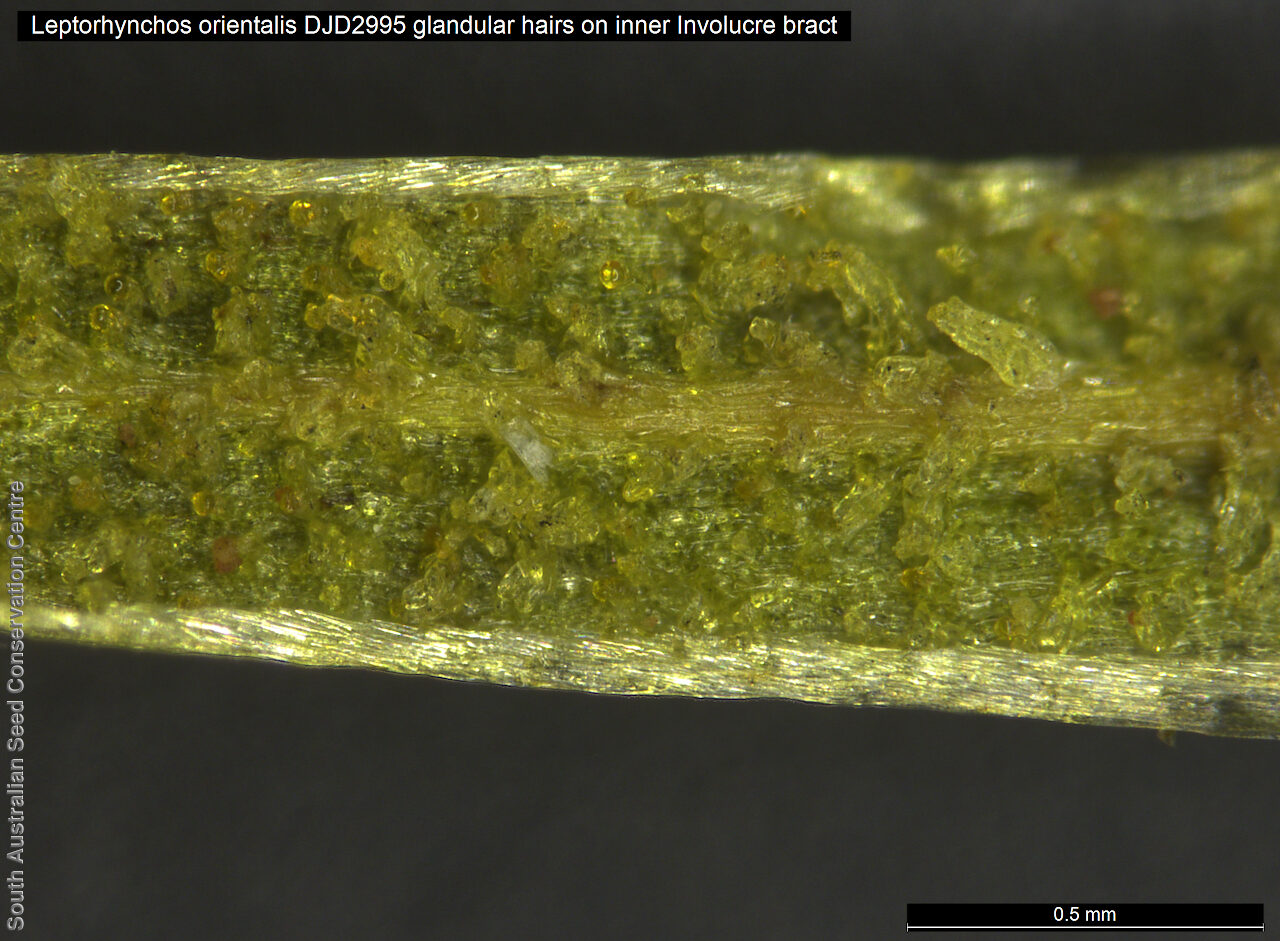
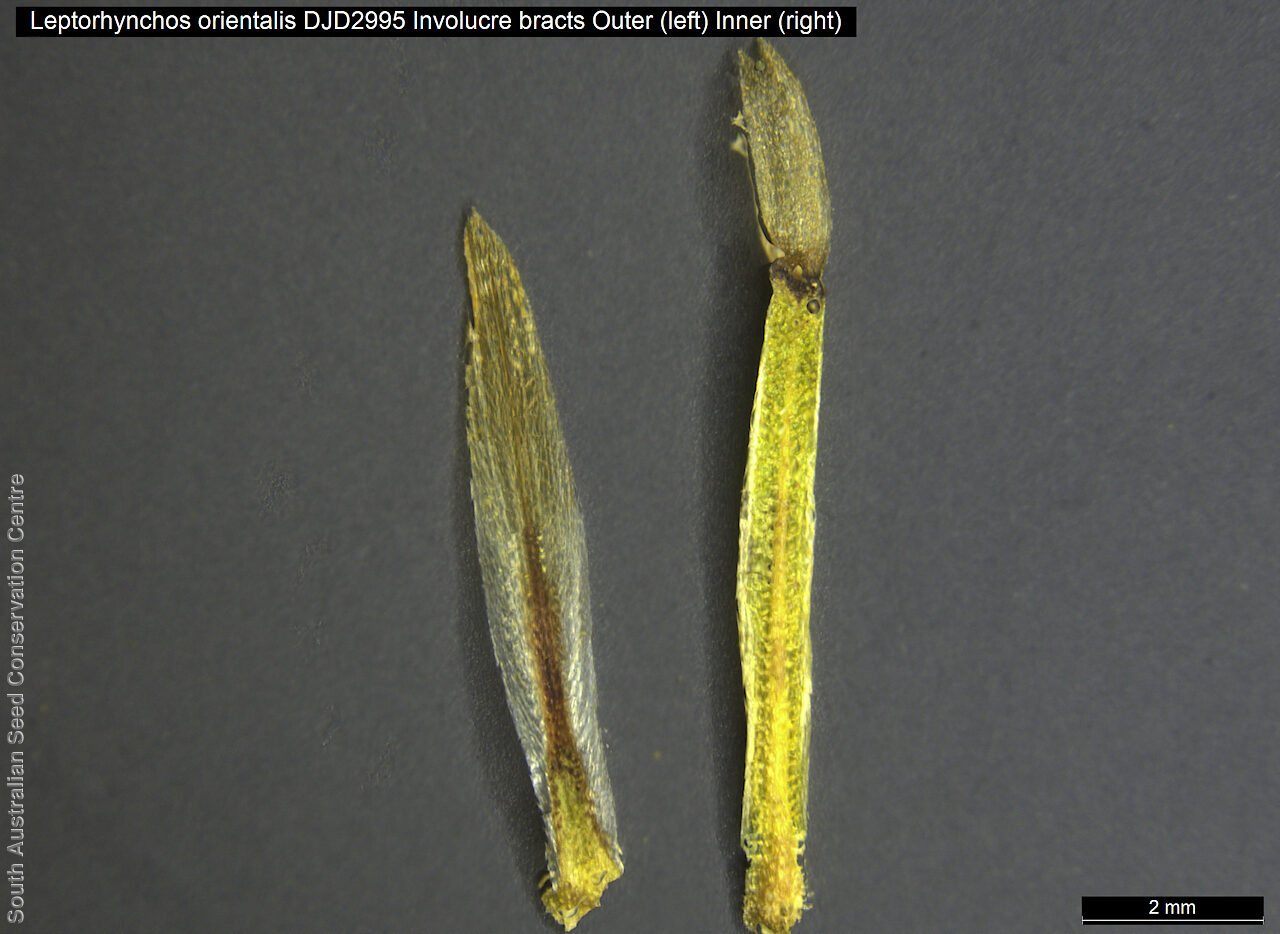
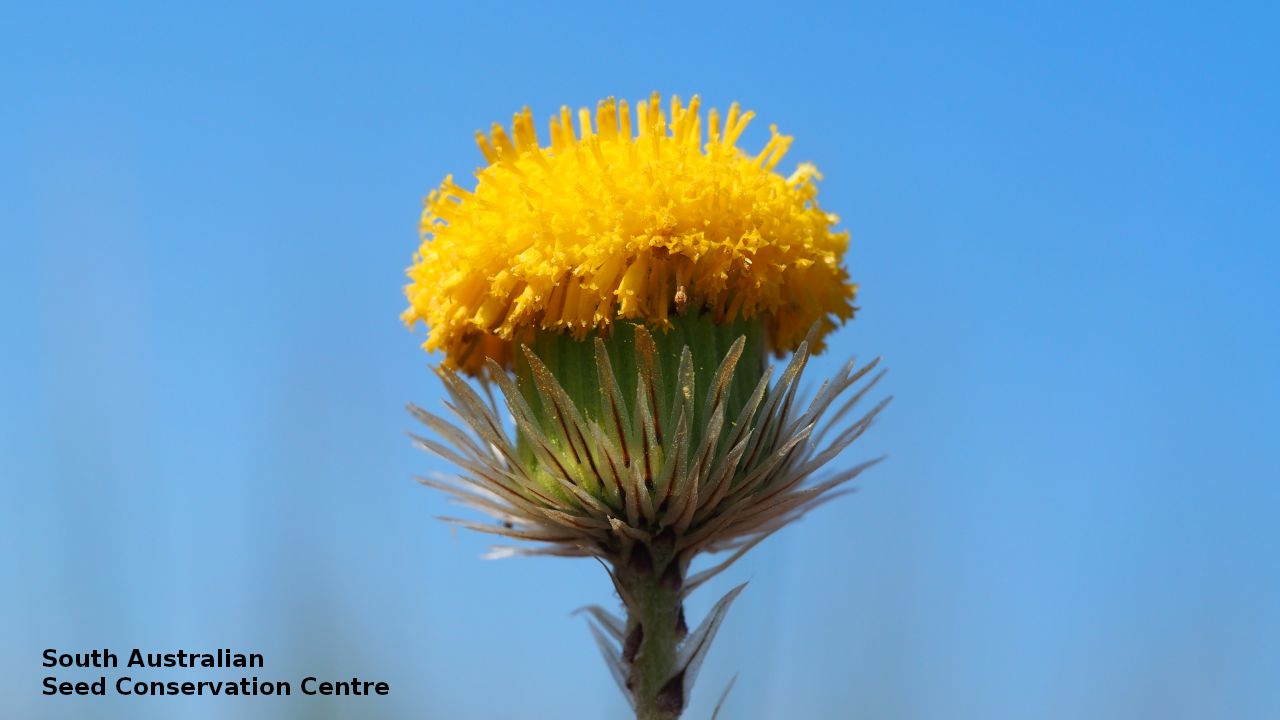
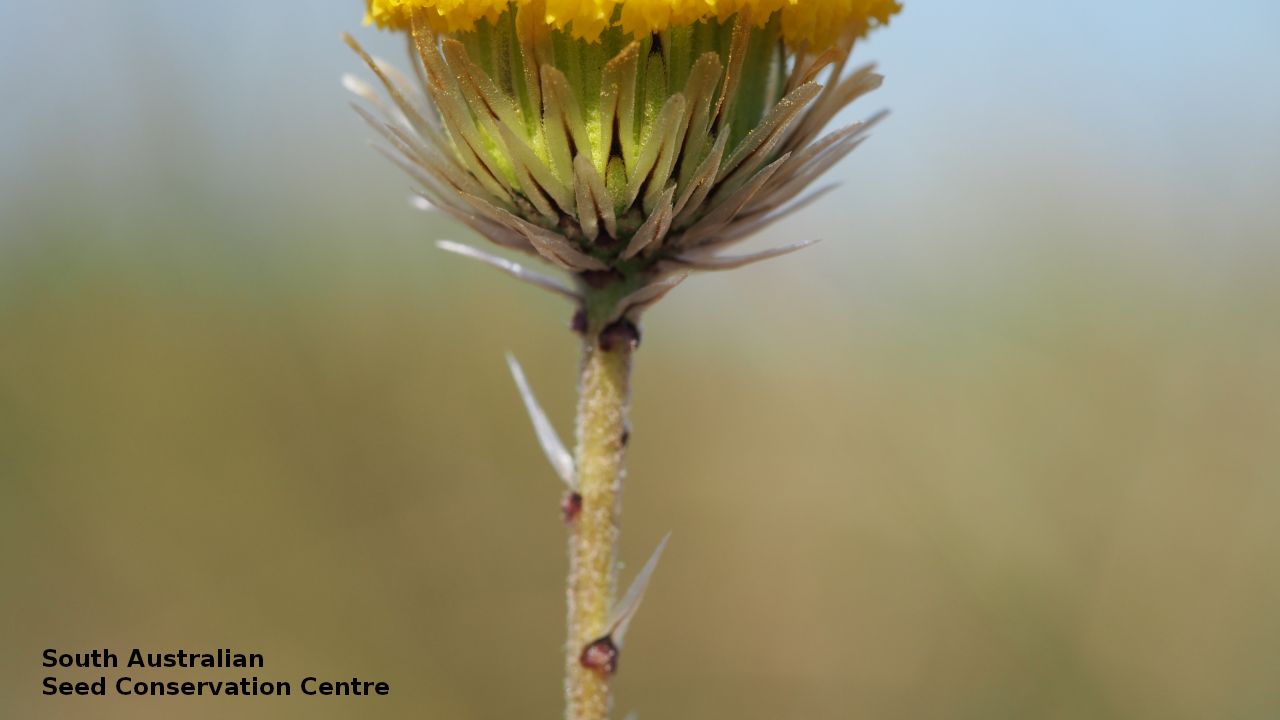
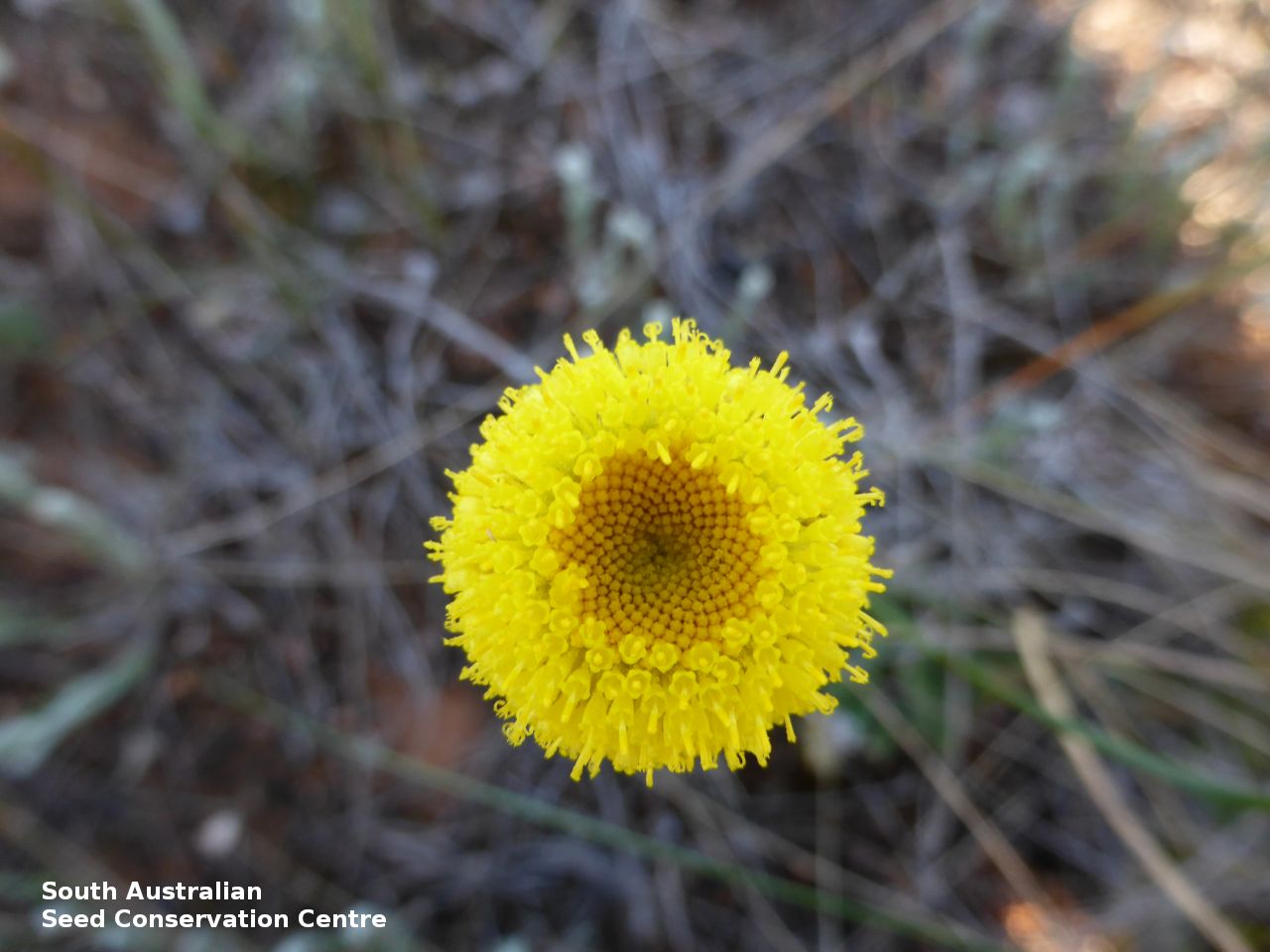
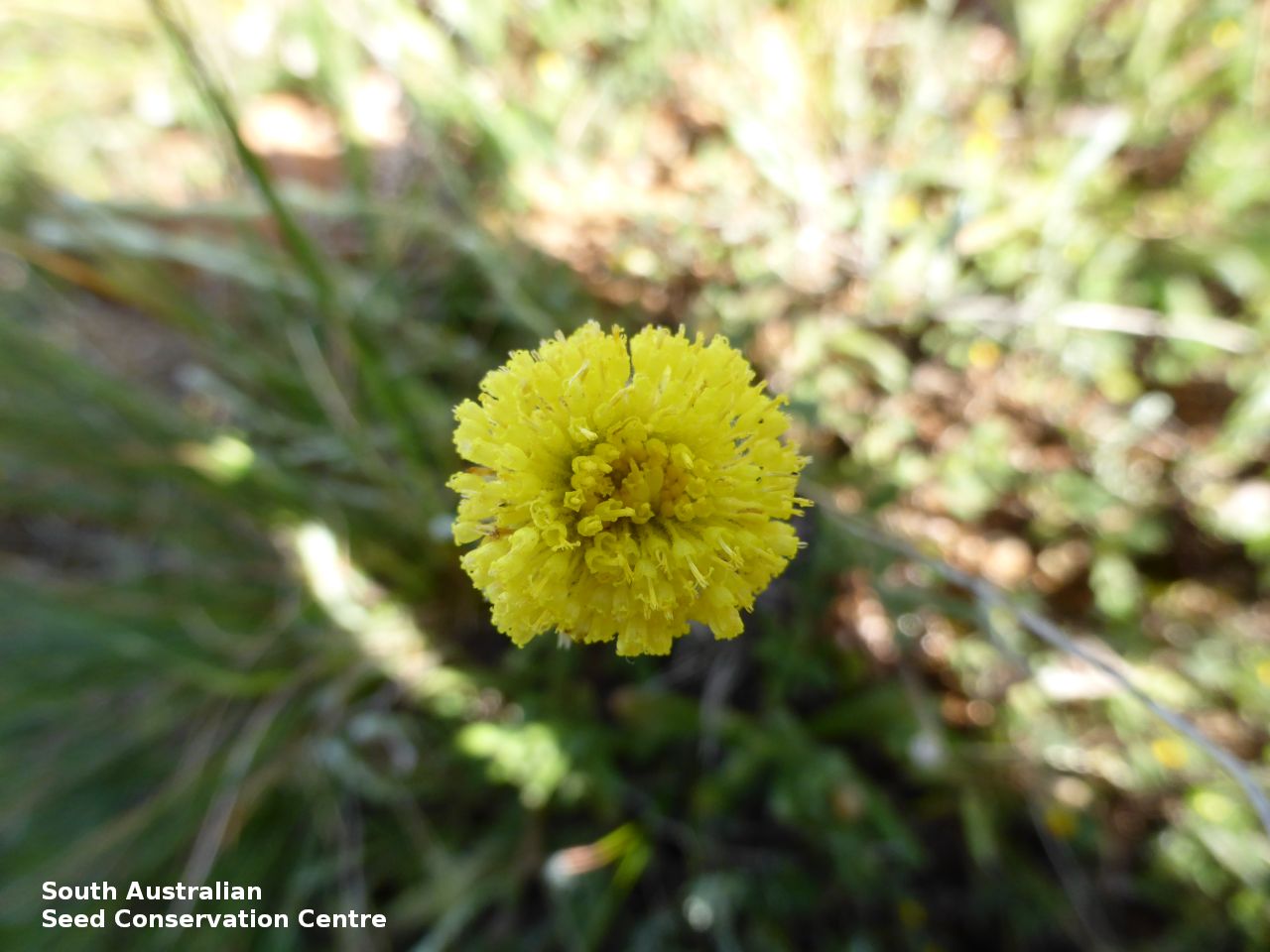
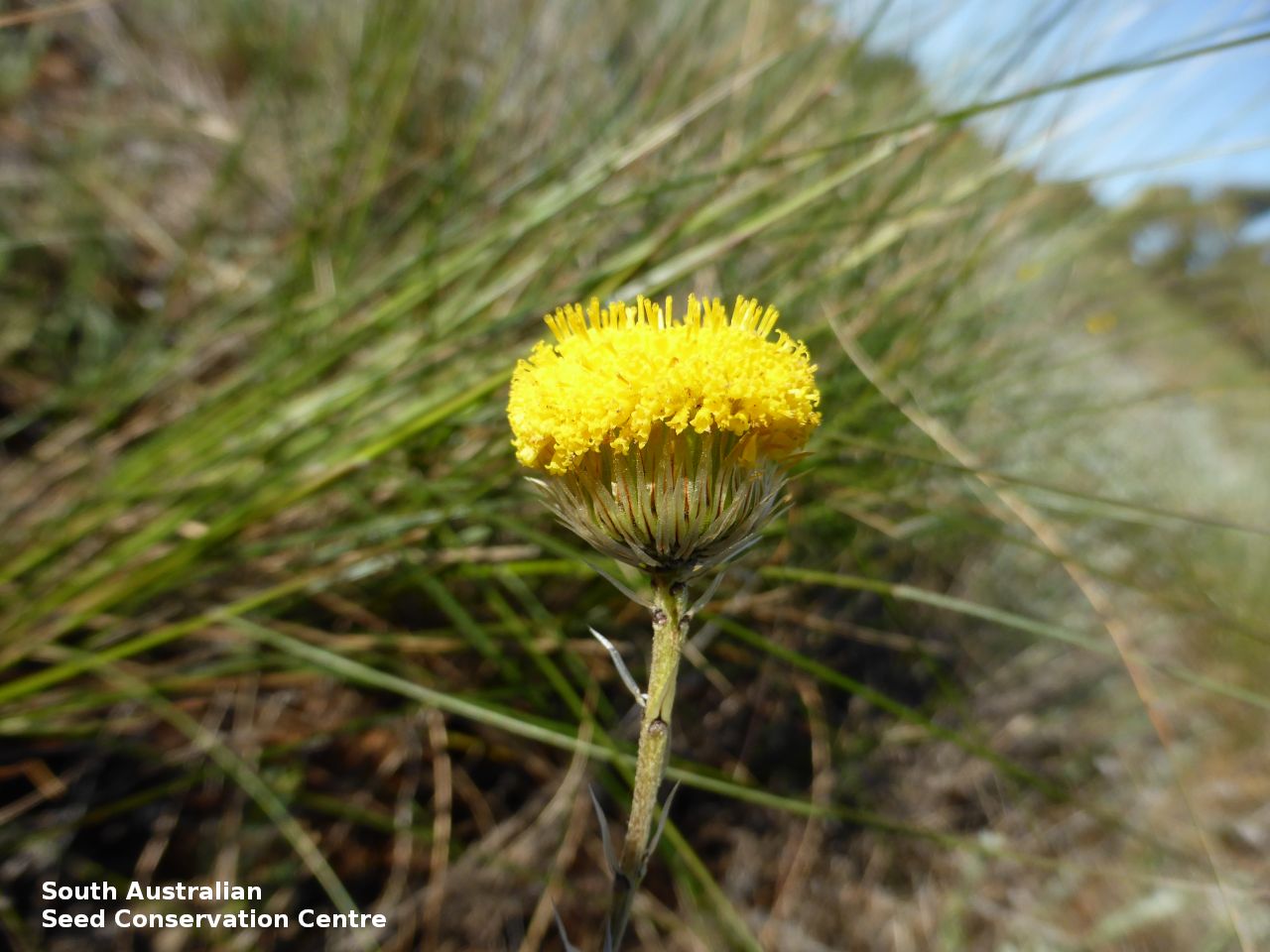
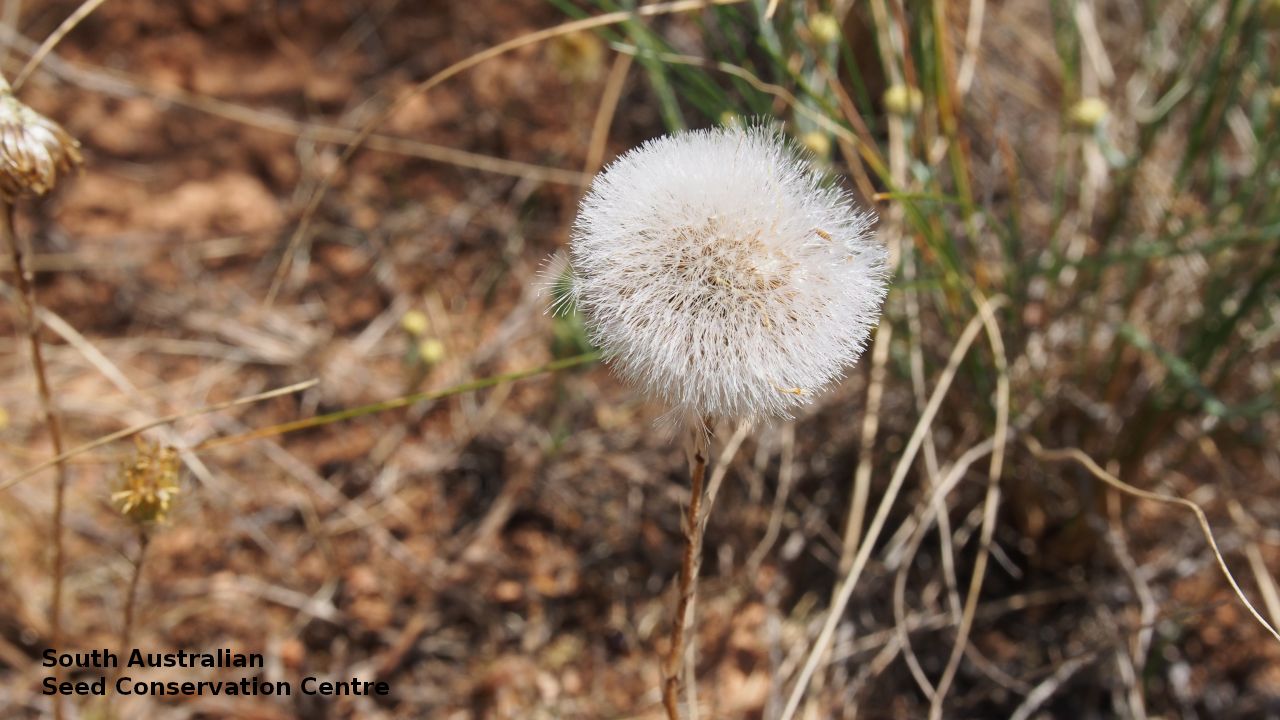
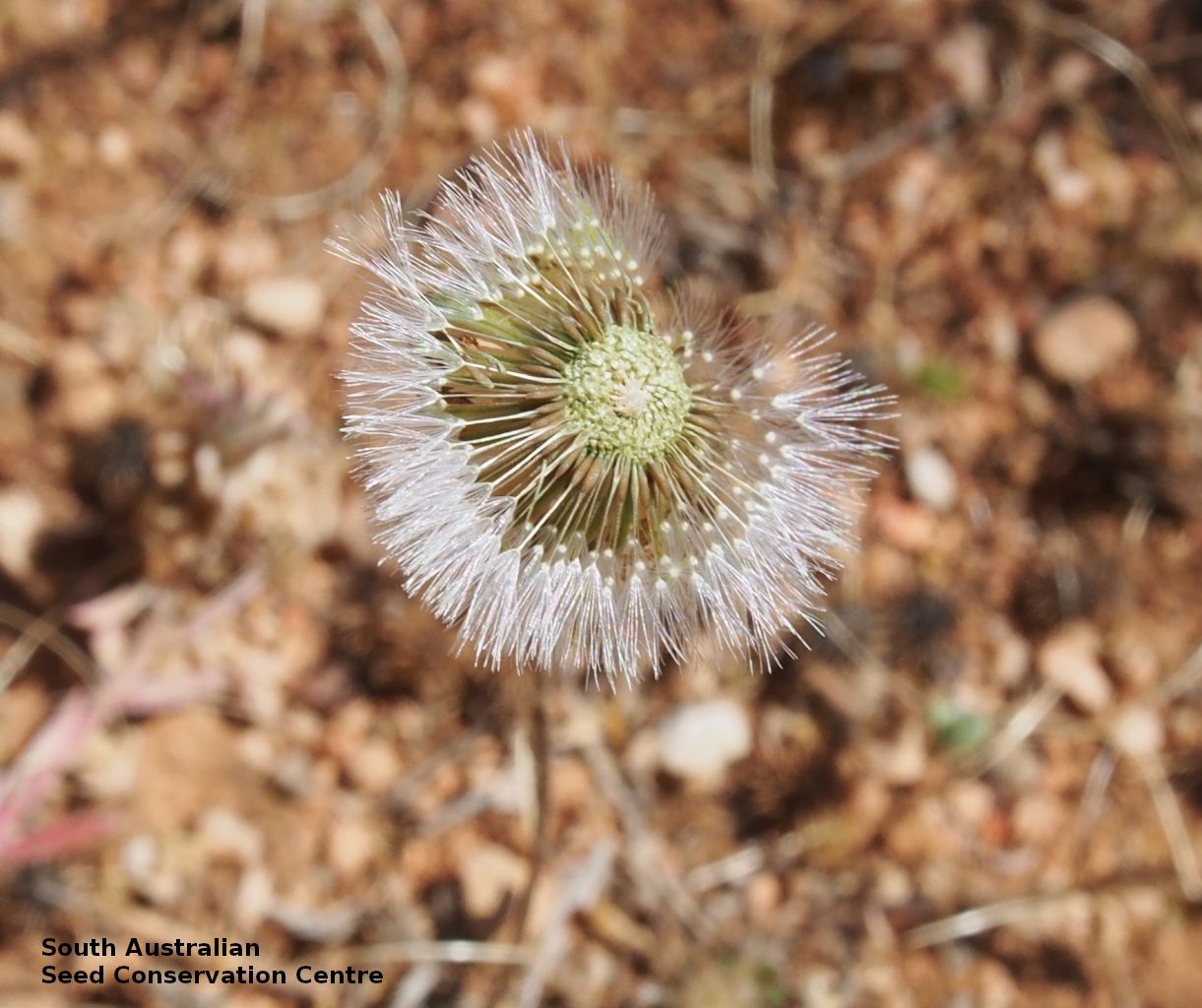
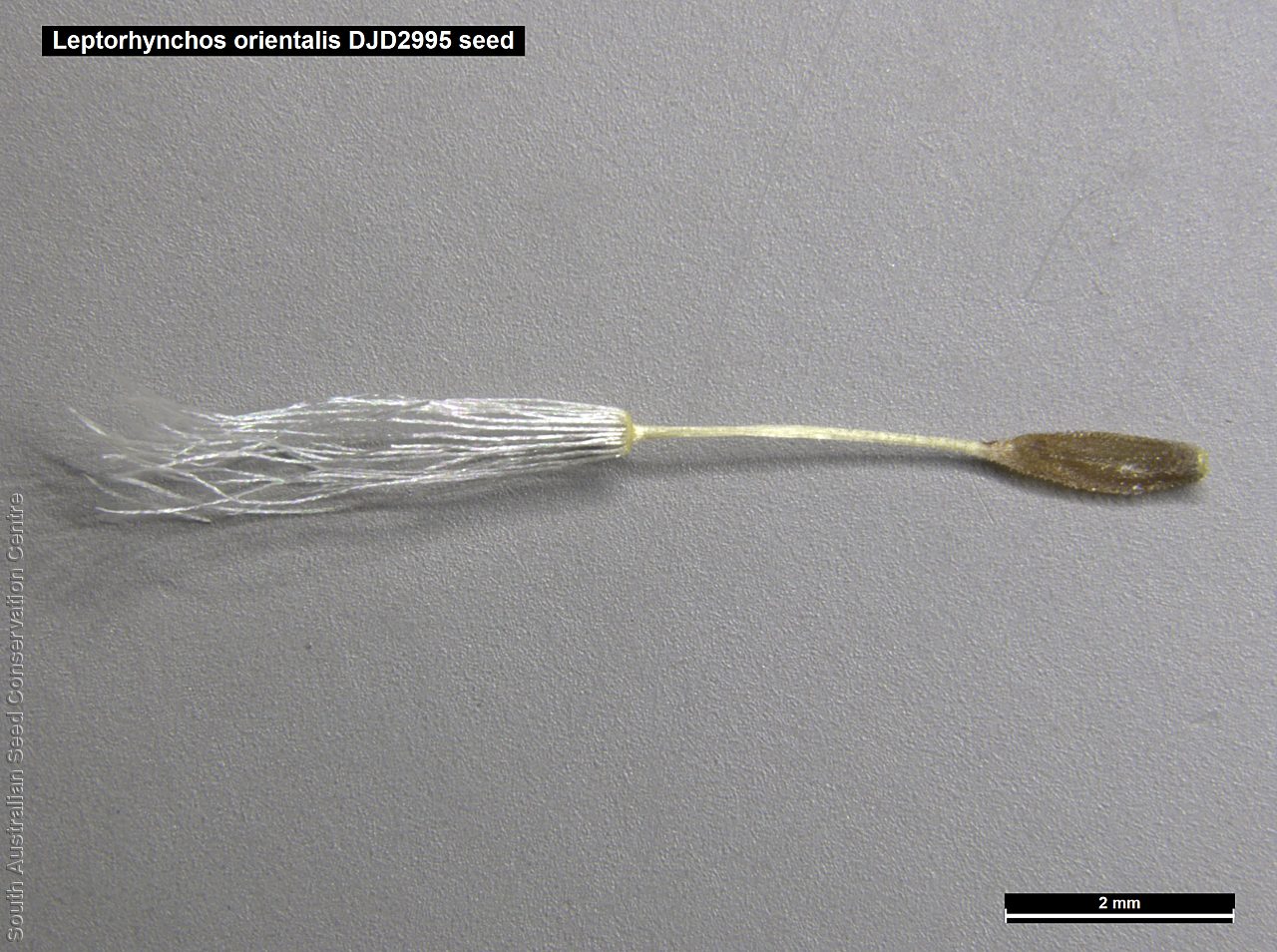
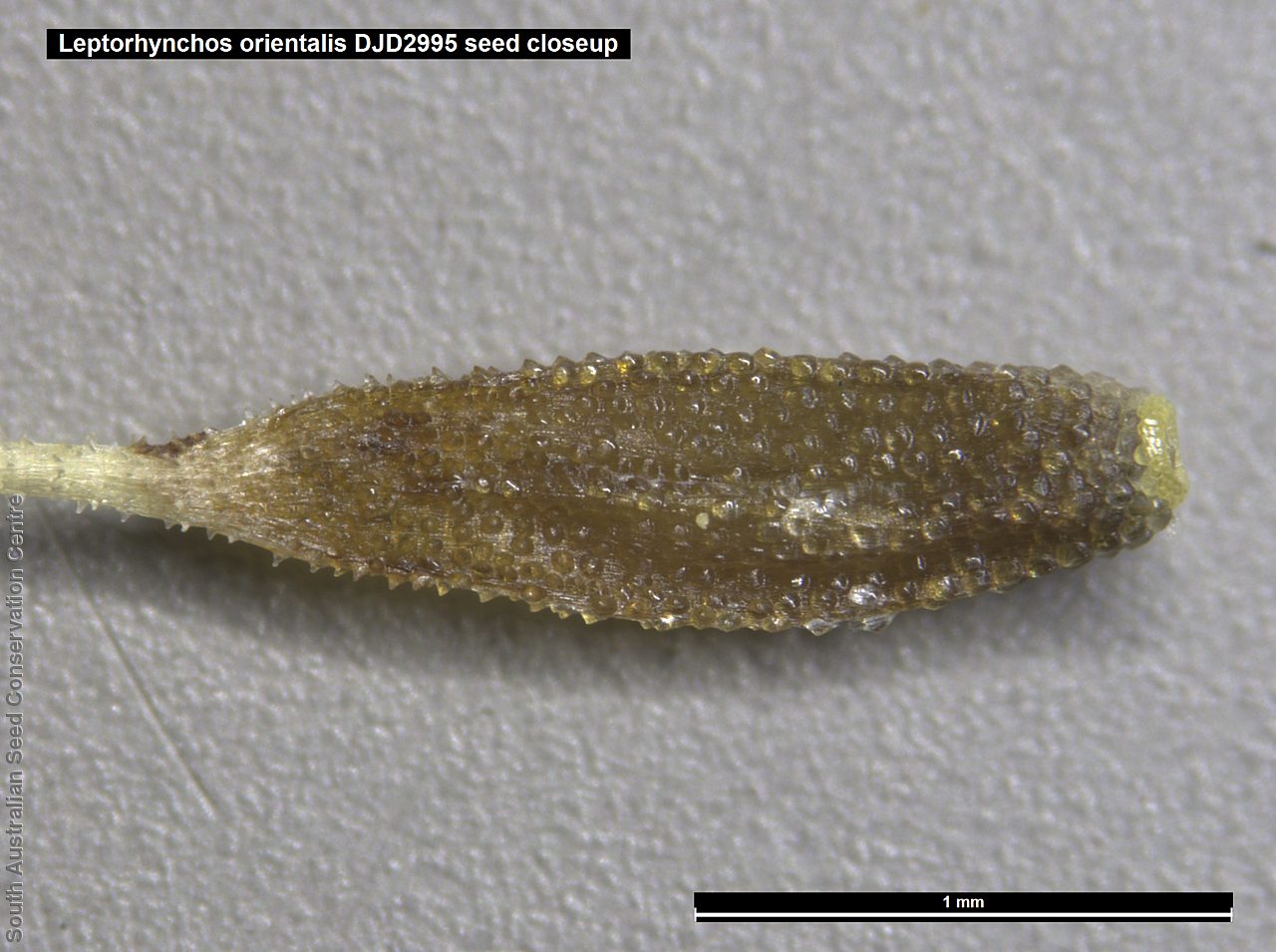
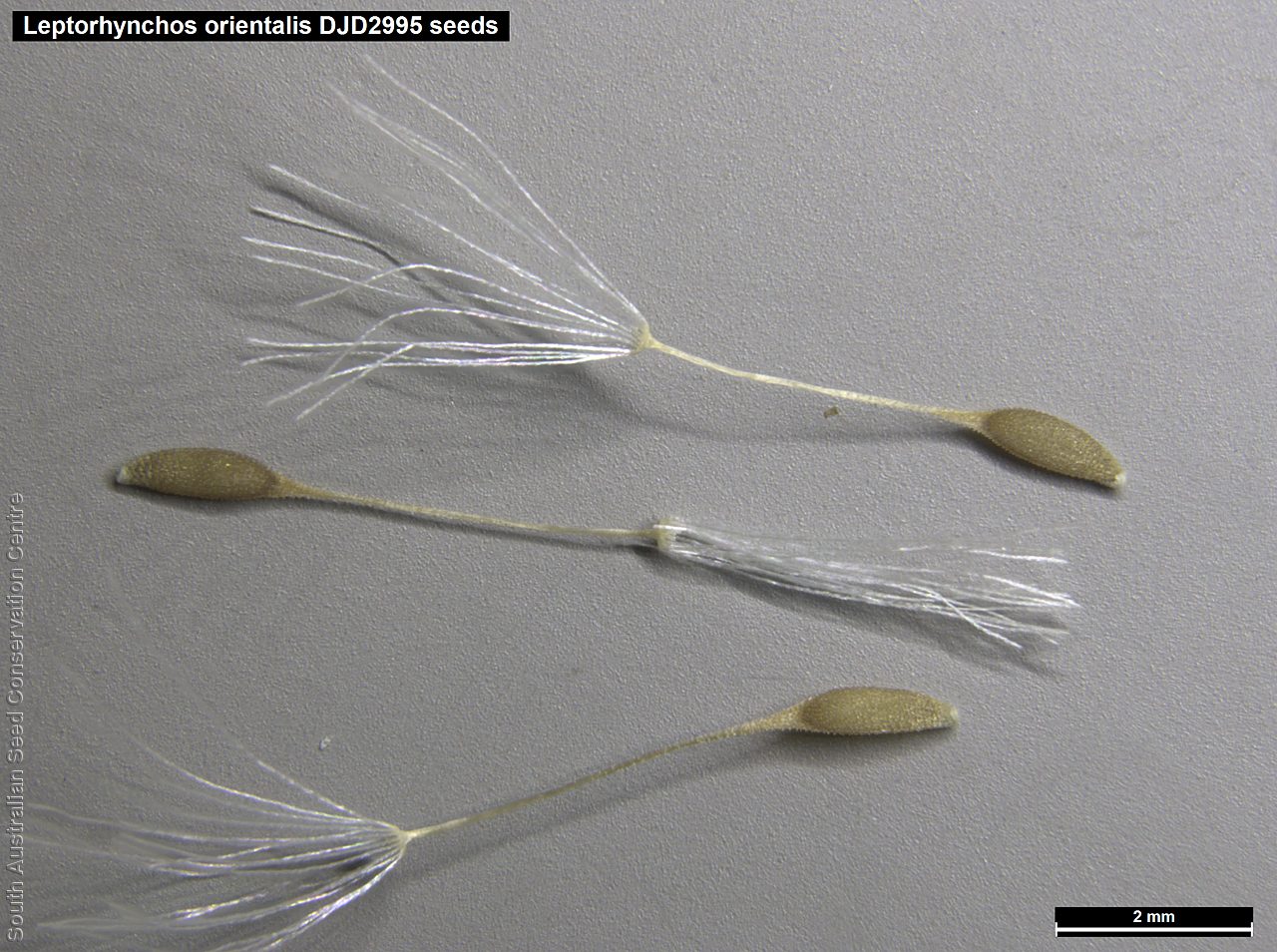

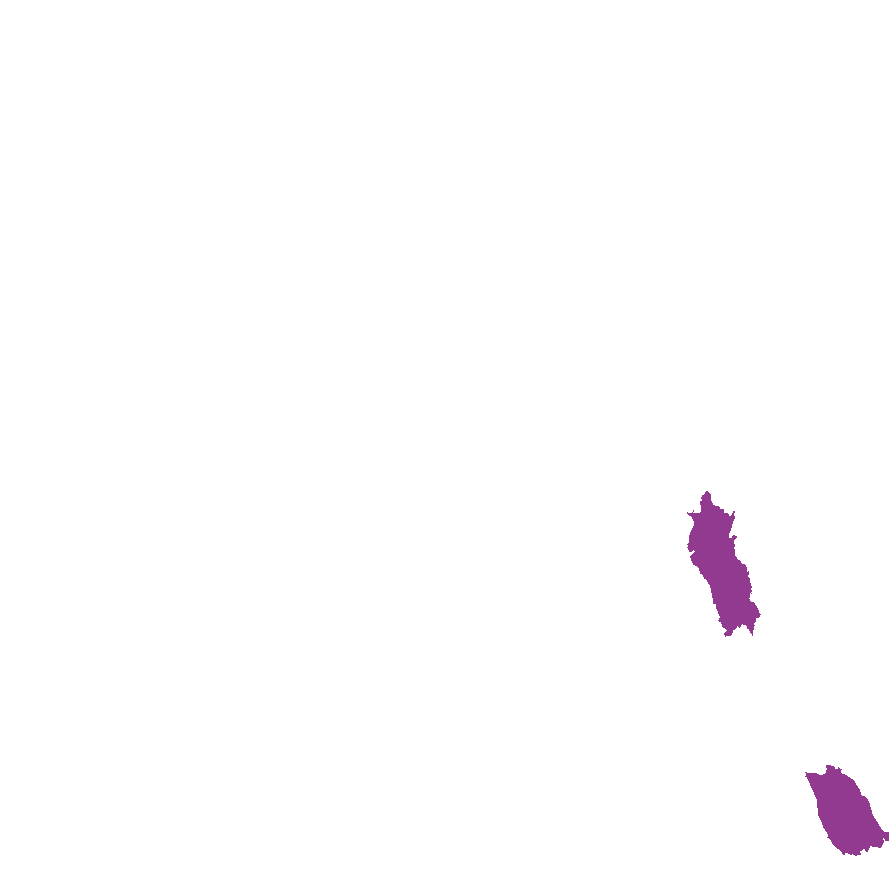
Etymology
Leptorhynchos from the Greek 'leptos' meaning slender and 'rhynchos' meaning a snout; alluding to the beaked achenes of some species. Orientalis means of or from the Orient; alluding to the species distribution in the eastern side of Australia.
Distribution and status
Only known from the Eyre Peninsula in South Australia. Other records from the Mount Lofty Ranges and the lower South-east are from 1938 or older and presumed extinct from those locations. Also found in New South Wales (from one location) and Victoria. Native. Very rare in South Australia. Very rare in the other states.
Herbarium regions: Eyre Peninsula, Northern Lofty, Southern Lofty, South Eastern, Green Adelaide
NRM regions: Adelaide and Mount Lofty Ranges, Eyre Peninsula, South East
AVH map: SA distribution map (external link)
Plant description
Erect to multi-stemmed annual to 30 cm high. Branches slender, minutely puberlous with gland-tipped and septate hairs. Leaves linear to 2 cm long, acute, margins recurved, scattered minute gland-tipped hairs and short whitish septate hairs. Flower-head broadly turbinate, bracts in many rows with ciliate hairs on the margins; outer and intermediate bracts very narrow-triangular, translucent, with reddish brown glandular sterome at base; inner bracts c. 7 mm long with linear green cartilaginous glandular stereome and narrow translucent margins. Florets bisexual. Corolla c. 6 mm long, sparsely glandular-puberlous. Florets yellow. Flowers in spring. Fruits are white fluffy daisy-head. Seeds are brown, semi-flat ovoid seed to 2 mm long and 0.5 mm wide, covered in tubercules and with a long tail with white papus at the end. Seed embryo type is spatulate fully developed.
Seed collection and propagation
Collect seeds between October and November. Collect heads that are fluffy. Either pick off the whole heads or use your finger and pull off the seeds from the head. Mature seeds will come off easily. Place the heads in a tray for a week to dry. No cleaning is required if only pure seeds are collected. If heads are collected, then rub the heads gently with your hands to dislodge the seeds. Viable seeds will be fat and hard. Use a sieve to separate the unwanted material. Store the seeds with a desiccant such as dried silica beads or dry rice, in an air tight container in a cool and dry place. From one collection viability was high at 90%
| Location | No. of seeds (weight grams) | Number of plants | Date collected | Collection number Collection location | Date stored | % Viability | Storage temperature |
|---|---|---|---|---|---|---|---|
| BGA | 59,000 (7.63 g) | 300+ | 27-Sep-2014 | DJD2995 Eyre Peninsula | 1-Jan-2016 | 95% | -18°C, -80°C |
| BGA | 44,500 (7.7 g) | 1000 | 13-Sep-2015 | KHB868 Flinders Ranges | 2-May-2017 | 100% | +5°C, -18°C, -80°C |
Number of plants: This is the number of plants from which the seeds were collected.
Collection location: The Herbarium of South Australia's region name.
% Viability: Percentage of filled healthy seeds determined by a cut test or x-ray.